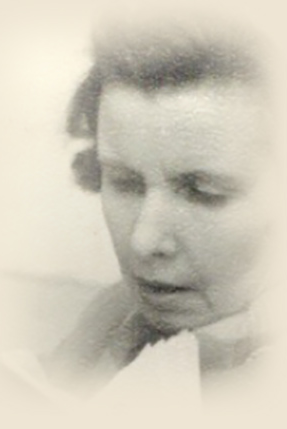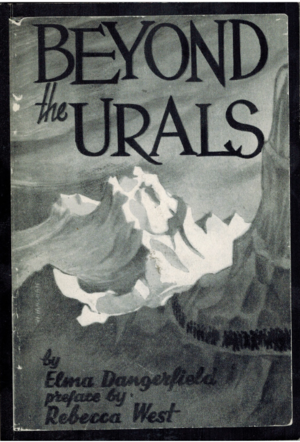Elma Dangerfield
( journalist, writer, politician, spook) | |
|---|---|
 | |
| Born | 11 October 1907 |
| Died | 22 January 2006 (Age 98) |
| Alma mater | • Beaufort School (Camberley) • University College London |
| Parents | • Henry Birkett • Hannah Mullenaux Findlay |
| Spouse | Edward Dangerfield |
| Founder of | European Atlantic Group |
| Member of | European Atlantic Group |
| Interests | • Intermarium • Duchess of Athol |
| Party | Liberal Party (UK) |
British journalist and Liberal Party politician. She also was an intelligence operative during and after World War 2, working especially with Eastern European exiles. | |
Elma Tryphosa Dangerfield CBE was a British journalist, writer, campaigner and Liberal Party politician. She also was an intelligence operative during and after World War 2, working especially with Eastern European exiles.[1]
Background
She was born in Liverpool as Elma Tryphosa Birkett but brought up partly in the Philippines, China, and Japan. She was educated in England at Beaufort School, Camberley, and University College London.[2] In 1926 she married Edward Dangerfield. They had one daughter.
She was Secretary, then Director of the Byron Society from 1971-2006.
Intelligence career
Muriel Spark mentioned her in her autobiography:
I had a part time job in the very lively office of European Affairs. This was a magazine for and about Eastern European Affairs and its exiles. Our offices were often full of members of shadow cabinets and vociferous exiles from Poland, Rumania, Russia, huddled always in their overcoats. It was run by Elma Dangerfield, a clever English Society woman, and Monty Radulovitch, a Montenegrin journalist who had written a book on Tito. I was full time for a while, and then I had to explain that I could only do three days a week. Monty Radulovitch accepted this offer although Elma Dangerfield, his partner, was against it. She was a creature of the ‘thirties, petite, with a short, tight, head-hugging coiffure and short, thin, body-hugging dresses....Elma wanted to refuse my offer of three days’ work a week and Monty (...in his typical phraseology) said ‘Elma, you regret thees’. Elma gave in and I stayed....’[3]
Stephen Dorril writes in his MI6: Fifty Years of Special Operations[4] "
The fading fingerprints of the British League for European Freedom (BLEF) and its sister organisation, the Scottish League for European Freedom (SLEF), are to be found all over the MI6-sponsored exile operations. Without their overt and behind-the-scenes political support for the exiles, it is unlikely that many of the secret operations would have been initiated, particularly since their role appears to have involved bringing to Britain and, once here, supporting and protecting a pool of solid anti-communists from which MI6 was able to recruit operatives. Their activities centred on three strong, independent-minded individuals ~ two Scots, the Duchess of Atholl and John Finlay Stewart, and an Englishwoman, Mrs Elma Dangerfield.
By 1930, Kitty Atholl was interviewing anti-communist refugees from the Soviet Union who told of the oppression of the people, particularly with regard to the northern timber camps where many well-to-do peasants (kulaks) had been conscripted against their will. ‘The following year she published The Conscription of a People, with an acknowledgement to the White Russian émigré journalist Anatole Baykolov, who appears to have supplied much of its content. It was an interesting and accurate examination of the role of slave labour in the Soviet Five Year Plan, with particular emphasis on the timber export industry, a trade the duchess tried to curtail.’
‘Married to a naval officer who was killed in the war, Mrs Dangerfield was a journalist by profession who initially worked for an offshoot of the MI6-controlled M19, helping at Beaconsfield with the construction of special gadgets such as miniaturised compasses and maps printed on silk for escaping British PoWs, and then for a time in the Admiralty. She hoped to do more for the war effort, and Duff Cooper at the Ministry of Information asked her to continue her writing, which led to a proposal for a series of articles on the ‘free women of Europe’. It entailed interviewing a large number of exiles during which time she became increasingly interested in the plight of the Poles. It was during visits to the School of Slavonic Studies that she met Frederick A. Voight, the editor of The Nineteenth Century and After magazine. A former Guardian foreign correspondent, who had worked for MI6 in the thirties as part of Claude Dansey’s Z-network, Voight had travelled extensively throughout Eastern Europe, including to Ukraine, where he had seen at first hand the devastation inflicted by Stalin. Between 1943 and the war's end, under the pseudonym 'Quentin Valey' in the Daily Mail, Voight was the champion of the Serbian collaborator General Dreza Mihailovic, a propagandist in the cause of the Greek government,pushing stories of communist atrocities, violations of women and so on. ‘Thoroughly right-wing, anti-communist and anti-Russian, Voight had friends among all the exile movements in London, and through his introductions, Mrs Dangerfield came to know everyone of interest.'
Political career
She was the Director of the European-Atlantic Group. She was a member of Royal Institute of International Affairs, and a Fellow of the Institute of Directors. She contested Aberdeen South in the United Kingdom general election of 1959.[5] She was Director, of the United Kingdom Council of the European Movement. She was Joint Executive Editor of European Review. She contested Hitchin in the United Kingdom general election of 1964.[6]
References
- ↑ https://eag.org.uk/wp-content/uploads/2021/11/EllaDangerfield.pdf
- ↑ The Times House of Commons, 1959
- ↑ Muriel Spark Curriculum Vitae: Autobiograpy, page number unknown
- ↑ [Stephen Dorril MI6: Fifty Years of Special Operations, Chapter 21 ISBN1-85702-093-6
- ↑ The Times House of Commons, 1959
- ↑ The Times House of Commons, 1964
